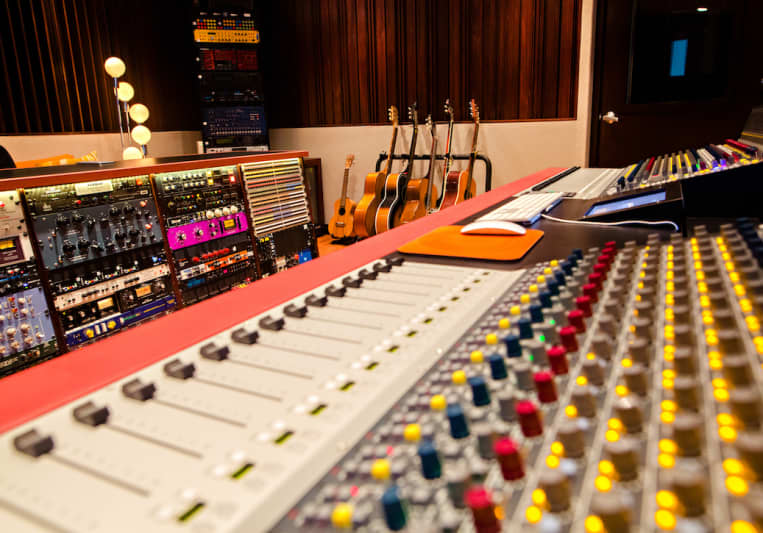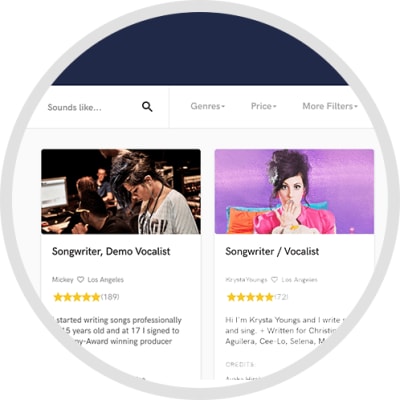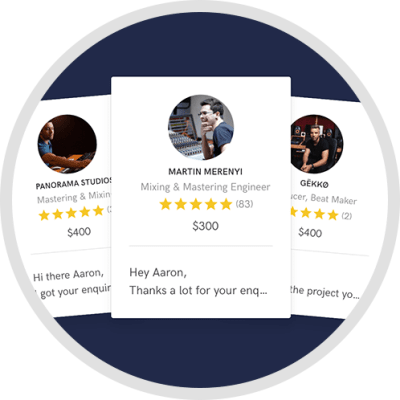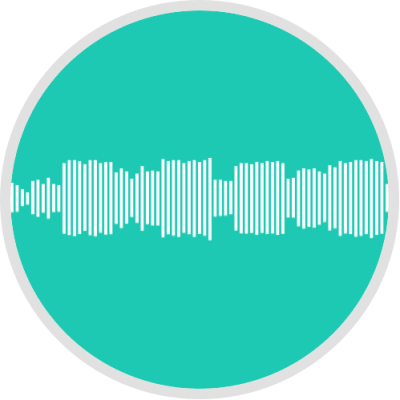
One of San Diego's best kept secrets, Rarefied Recording, is hidden away in the hip North Park area. Professionally designed, built, and equipped. Also, astonishingly affordable! Rarefied has everything you need to make a top-notch recording. Plus, it has tons of instruments and vibe. Guest engineer friendly!
Rarefied Recording was designed by Wes Lachot. Wes is one of today's top studio designers and his rooms are extremely accurate and a joy to work in. Rarefied is no exception. Approximately 800 square feet, the studio may be modest in size, but its sonic stature is tremendous.
The studio contains an exceptional Control Room filled with tons of outboard gear, a 32 channel Neve Genesys, Dynaudio mains, and Apogee/Burl conversion. An MCI JH16, 2" 16 track is also available upon special request.
The main Live Room is filled with vintage keyboards, a Hammond B2 with Leslie, and even a baby grand piano. Two of the side walls have acoustic panels that can be flipped around, one side reflective and the other absorptive. This allows the engineer to adjust how lively the room responds. The Live Room also has a window wall allowing natural light into the space. A rare feature for a studio!
There are also two small Soundlocks that can be used to isolate guitar amps and the like.
The mic closet at Rarefied is filled with tube, condenser, dynamic and ribbon mic options.
When you need to get out of the studio for a bit, you can chill in the lounge, the outside areas, or take a stroll in the neighborhood to any number of great restaurants, cafes, or bars/breweries. The lounge has old school video games, a kitchenette, and a full bath. Out-of-towners may stay for a nominal fee.
Send me an email through 'Contact' button above and I'll get back to you asap.
Interview with Rarefied Recording
Q: Tell us about a project you worked on you are especially proud of and why. What was your role?
A: 4 songs for Stephen El Rey. I am proud of this one because most of it was recorded live off the floor and everything sounds great. Even the vocal! The tracks have tons of vibe and the vocal is warm and fuzzy in just the right way. The mixes came together so easily. Overall, the whole thing just flowed out like it was perfectly meant to be the way it came out. I recorded and mixed the songs.
Q: What are you working on at the moment?
A: Helping a client mix a song.
Q: What's the biggest misconception about what you do?
A: That you can come in without practice and with a half-ass song and I'll be able to make it awesome. Songwriting and performance cannot be made up for with great sound.
Q: What type of music do you usually work on?
A: Chief Engineer, Roy Silverstein, is best suited for most styles of rock (except those on the heavier end of the spectrum), folk, blues/jazz, singer-songwriter, and pop productions. Guest engineers can be brought in under special circumstances. There are some known to Rarefied already that specialize in rap/hip-hop and heavy rock music.
Q: What do you bring to a song?
A: A fresh ear with a strong sense of musical taste. If I hear something that could improve your song, I'll be sure to mention it, but I am by no means interested in trying to dictate anything to you. Your work is your art and if you know exactly what you want I will do whatever you ask.
Q: What's your typical work process?
A: The usual work process is to spend a day or multiple days tracking and then about a day to a day and a half per song mixing. Assuming drums are involved, tracking day number one will be largely taken up by getting drum sounds. Some sessions are able to get some keeper takes by the end of day one of the drums and/or all basic instruments. Additional days/hours are used as required to track the remainder of the songs/instruments. Once all tracking is completed, each song is given approximately a day to a day and half of mix time. Initial mixing is done without the attendance of the band. This allows the engineer to focus in without the distractions of people giving their opinions every 5 minutes. Mixing is done in a hybrid fashion, utilizing both Pro Tools and the Neve Genesys console/outboard gear of the studio. Once the mix is at a place that the engineer is satisfied with, the band or key member(s) come into the studio to listen and give feedback or an mp3 can be sent. Tweaks are made on the spot and then the mix is captured through the Burl converter back to the computer. Documentation is made of all outboard settings in case tweaks are required at a later time (the Genesys has total recall), but at this point the mix is consider to be done. If further revisions are deemed necessary they will be charged at the standard hourly rate. Mastering is also offered at the studio, but not for projects tracked or mixed at the studio. Meaning, only material brought in from outside the studio will be acceptable for Mastering. This is done to maintain an objective stance for the Master. For projects coming in for Mastering, each song gets about 2 hrs of attention. A complete "in the box" process is used for Mastering, utilizing top-notch plug-ins from Universal Audio and others. Mastering is also done un-attended and presented to the artist when done. Since recall is not an issue when working completely "in the box", up to two revisions are accepted at no extra charge.
Q: Is there anyone on SoundBetter you know and would recommend to your clients?
A: There are several engineers that make guest appearances at Rarefied that are on SoundBetter. Look for Justin Truelove for your rap/hip-hop needs. Ariel Levine is another excellent engineer for almost any type of music.
Q: What advice do you have for a customer looking to hire a provider like you?
A: Try to find out how the studio was designed and built. Were professional acousticians involved or was it just put together in a make-shift fashion? Also see how well the studio is managed. How well is the gear maintained? How much initial support is given to you when you're first getting your feet wet at the studio? Take a tour of several studios. Listen to projects done at each of the studios and have conversations with the engineers you would potentially be working with. Make sure the engineer's attitude and the vibe of the studio fits with you and your music.
Q: Tell us about your studio setup.
A: Rarefied was designed by studio architect Wes Lachot. It was built from the ground up by professionals and specialists. A bit under 800 square feet, the studio consists of a Control Room, Live Room, and two soundlocks that can be used to isolate guitar amps and the like. The Control Room is the crown jewel of the studio. Built around the concept of a Reflection Free Zone (RFZ) when you're in the sweet spot the acoustics insure that what you hear is the speakers alone with little to no influence from the room itself. A big part of that design are the soffit mounted mains (Dynaudio M3A's powered by Bryston amps and crossover). Neumann KH 310's are a second monitoring option as are a pair of Avantone Active Mix Cubes. The Control Room also makes use of a 32 channel Neve Genesys mixing board, Apogee (32 i/o) and Burl (2 i) converter options, and a plethora of external pre-amps/compressors/equalizers/reverbs/etc. All of the equipment is accessible via a professionally wired tiny telephone patchbay system, making it possible to connect any piece of gear to any other with ease. An MCI JH16 2", 16 track tape machine is available upon special request. The Live Room has ceiling height over 10 feet and features two walls with variable acoustics. The "bi-fusser" panels on these walls can be flipped between a reflective and non-reflective side to change the liveliness of the room. Another wall features a set of windows, allowing natural sunlight into the room if desired (a rare studio treat!). Along the edges of the Live Room are a myriad of killer keyboards and other instruments. There's a baby grand piano, a Hammond B2 with a Leslie speaker, a Wurlitzer, a Rhodes, a Farfisa organ, a set of vibes and even a Theremin! The mic closet at Rarefied is also chock full of great options including a vintage Neumann U67 and a pair of AEA R44's (remakes of the classic RCA 44). Tube, condenser, dynamic, and ribbon mics are all well represented. The studio's lounge provides a comfortable space to get out of the way and chill. It features a full bath, kitchenette, fold out couch, and old school video game systems. One or two out of town guests may stay overnight in the lounge for a nominal fee.
Q: Describe the most common type of work you do for your clients.
A: Probably the most common request from bands looking to work at Rarefied would be to track a few songs live or mostly live. Despite the modest size of the live room, the studio is able to support this with little issue. By utilizing the two soundlocks and the two gobos, quite a bit of isolation is possible within the space. The bleed that does remain is usually beneficial to the cohesiveness of the overall recording.
Q: Analog or digital and why?
A: Both, but mainly digital. Most client's can't afford the extra expense of working on tape. A reel of tape itself is about $350 after shipping. The process of working on tape also tends to take a bit longer as editing is limited to basic "punch-ins". This means that full performances are usually required. This is great for bands that can pull it off. There is something special that tape brings to the table. What goes in definitely does not sound like what comes out, but it's usually better! That said, today's digital converters are really quite excellent. When you couple them with quality mic pre-amps and compressors, not much is lost over analog. Plus, mixing on a console and utilizing even more analog gear in the mix process keeps things feeling very organic.
Q: What do you like most about your job?
A: Watching the music unfold in front my ears. I love when a project goes from a collection of instruments to a full fledged song, full of emotion and character.
Q: What was your career path? How long have you been doing this?
A: I got interested in recording about 20 years ago as a teenager playing in alternative/punk bands with my high school friends in the Chicago area. I taught myself how to use a 4 track and recorded my own bands and even a band I wasn't in by the time I finished high school. After high school I attended the "Audio Engineering" program at the University of Miami. This program was actually a full Bachelor of Science in Electrical Engineering with a special emphasis on Audio applications. There I learned more about recording, music, the science of sound, and, of course, electrical engineering. Every summer I would do more recording with friends back in Chicago while during the school year I focused on my studies. After college I got a job as an Audio Systems Engineer at Qualcomm, Inc. in San Diego, CA where I helped design audio chips for cellular phones. At the same time I kept recording on the side at a home studio setup I put together (aka The Habitat). At The Habitat I recorded several records for bands of my own and others. In 2010 I purchased a property capable of supporting the build-out of a real recording studio and quickly got in touch with Wes Lachot to help design it. 3 years later, Rarefied Recording was born. In August of 2015, after two years of consistent growth in business at Rarefied, I left my job at Qualcomm to focus my efforts full time at the studio.
Q: Can you share one music production tip?
A: Arrangement is key. Think about how the instruments in your production sit on top of each other. Make sure each has adequate space in the frequency and time domains.
- Recording StudioAverage price - $450 per day
- Mixing EngineerAverage price - $450 per song
- Mastering EngineerAverage price - $70 per song
- Live drum trackContact for pricing
- Electric GuitarContact for pricing
- PianoContact for pricing
- HornContact for pricing
50% deposit is required to lock in your time.
Total due before any files are given to the client.
All guest engineers must be approved
- Dynaudio M3A
- Neve Genesys
- Apogee AD/DA-16X
- Burl B2 Bomber
- Mic pre's by Chandler/UA/Shadow Hills/API/Electrodyne/Helios
- Neve 33609
- Distressor
- LA-3A
- Pultec EQ
- Neumann U47/U67
- AEA R44/R84/R88
- Telefunken 221b
- Coles 4038
- Royer R-121



